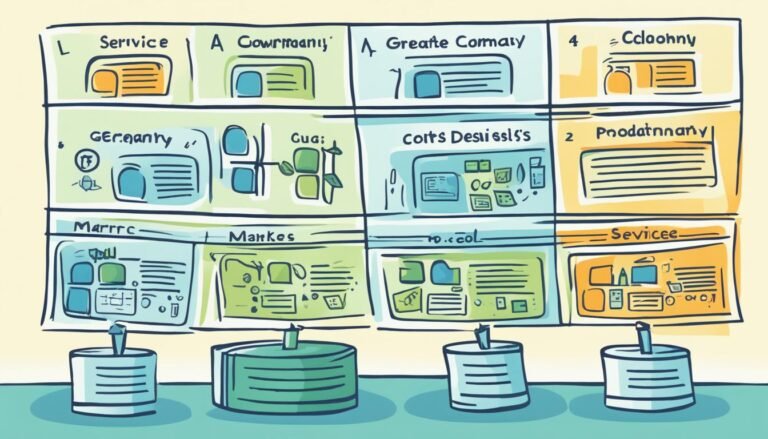User Experience and Psychology
Have you ever wondered why some websites and apps are so intuitive and engaging, while others leave you frustrated and confused? It turns out that there is a fascinating connection between user experience and psychology.
By understanding the cognitive processes, emotions, and motivations that drive user behavior, designers can create interfaces that not only look visually appealing but also truly resonate with users.
In this discussion, we will explore the intriguing ways in which psychology influences user experience, from the role of perception and emotions to the impact of decision-making and social psychology.
Get ready to uncover the secrets behind creating meaningful and impactful user experiences.
Key Takeaways
- Analyzing user behavior is essential for creating a meaningful and impactful user experience.
- Habit formation plays a significant role in shaping the user experience and can increase engagement and loyalty.
- Cognitive psychology principles should be applied to enhance the user experience, such as minimizing cognitive load and optimizing attention allocation.
- Emotions are crucial in designing user experiences, and elements like color, typography, and storytelling can evoke specific emotional responses.
The Importance of Understanding User Behavior
To create a meaningful and impactful user experience, it's essential to thoroughly understand and analyze user behavior. Understanding user behavior involves delving into the psychology behind decision making and recognizing the role of habit formation in shaping the user experience.
Decision making is a complex process influenced by various factors, including emotions, cognitive biases, and social influences. By understanding the psychology behind decision making, you can design user experiences that align with users' preferences, needs, and motivations. For example, by utilizing persuasive design techniques, such as social proof or scarcity, you can influence users' decision-making process and guide them towards desired actions.
Moreover, habit formation plays a crucial role in user experience. Habits are automatic behaviors triggered by environmental cues and reinforced through repetition. By incorporating habit-forming elements into your user interface, you can create experiences that become ingrained in users' routines. This can lead to increased engagement, loyalty, and ultimately, a positive user experience.
Applying Cognitive Psychology to UX Design
By applying principles of cognitive psychology, you can enhance the user experience by understanding how users perceive, process, and interact with your design. Cognitive psychology focuses on how the mind works, including attention, memory, and problem-solving. When designing a user experience (UX), it is important to consider the cognitive load that users experience. Cognitive load refers to the mental effort required to process information and perform tasks. Too much cognitive load can overwhelm users and lead to frustration and abandonment of the design.
To optimize the user experience, it is essential to minimize cognitive load. This can be achieved by simplifying the design, reducing distractions, and providing clear instructions and feedback. By doing so, users can focus their attention on the key elements of the design and complete tasks more efficiently. Attention is a limited resource, and by understanding how users allocate their attention, you can design interfaces that guide their focus to the most important information.
To illustrate the concept of attention and cognitive load in UX design, consider the following table:
| Design Element | Attention Required | Cognitive Load |
|---|---|---|
| Clear Navigation | High | Low |
| Visual Hierarchy | Medium | Medium |
| Concise Text | Low | Low |
| Interactive Feedback | High | Medium |
| Minimal Distractions | Low | Low |
The Role of Perception in User Experience
Users' perception plays a crucial role in shaping their overall experience with a design, especially in terms of how they interpret and interact with the visual elements presented to them. Understanding the role of perception in user experience is essential for designers to create engaging and effective designs.
Perceptual illusions are phenomena that occur when our brains interpret sensory information in a way that doesn't match the physical reality. These illusions can significantly impact user experience, as they can lead to misinterpretation or misrepresentation of the design elements. For example, the Müller-Lyer illusion, where two lines of the same length appear different due to the addition of arrowheads, can affect users' perception of the layout or alignment of elements on a webpage.
User attention is another critical aspect of perception in user experience. Designers must consider how users allocate their attention to different elements within a design. By understanding the principles of attention, designers can strategically guide users' focus to the most important or relevant elements. For example, using color contrast or visual cues can help draw users' attention to important buttons or call-to-action elements.
Leveraging the Power of Emotions in Design
When it comes to designing user experiences, emotions play a crucial role. By understanding the principles of emotional design, you can create experiences that resonate with your users on a cognitive level.
This means designing with the intention of evoking specific emotions and crafting experiences that leave a lasting impact.
Emotional Design Principles
To create impactful designs, it's essential to understand and harness the power of emotions through the principles of emotional design. Emotional design principles involve analyzing user behavior to create designs that evoke specific emotional responses. By understanding how emotions influence user behavior, designers can create experiences that resonate with users on a deeper level.
One key principle is creating a positive emotional experience by incorporating elements such as color, typography, and imagery that evoke positive emotions. Another principle is the use of storytelling to engage users emotionally and create a connection with the design. Additionally, the principle of simplicity ensures that the design is easy to navigate and understand, reducing negative emotions such as frustration.
Cognitive Impact of Emotions
Understanding the cognitive impact of emotions is crucial for designers looking to leverage the power of emotions in their designs. By delving into cognitive neuroscience and emotional intelligence, designers can gain insights into how emotions influence users' cognitive processes and decision-making.
Here are three key points to consider:
- Emotions shape perception: Emotions can influence how users perceive and interpret information, leading to biased judgments and decisions.
- Emotional engagement enhances memory: Emotionally engaging designs can improve users' memory retention, making it more likely for them to remember and recall information.
- Emotional design drives behavior: By tapping into users' emotions, designers can motivate desired actions and behaviors, creating a more engaging and persuasive user experience.
Designing for Emotional Resonance
By harnessing the cognitive impact of emotions, designers can create designs that resonate emotionally with you, resulting in a more engaging and persuasive user experience.
Designing for emotional resonance involves understanding your emotions as a user and using that understanding to design experiences that satisfy your needs and desires.
When a design evokes positive emotions such as joy, excitement, or calmness, it enhances your overall satisfaction with the product or service.
On the other hand, negative emotions like frustration or confusion can hinder your experience and lead to dissatisfaction.
The Psychology of User Engagement
When it comes to user engagement, understanding the psychology behind it's crucial. By tapping into emotional triggers, you can create a more engaging experience for users.
Additionally, being aware of cognitive biases can help you design interfaces that effectively capture and hold users' attention.
Lastly, incorporating persuasive design techniques can further enhance user engagement, encouraging them to take desired actions.
Emotional Triggers for Engagement
To truly engage users, it's essential to tap into their emotions and create meaningful connections. Understanding user emotions and utilizing emotional triggers for motivation can significantly enhance user engagement.
Here are three key emotional triggers that can help foster engagement:
- Empathy: Show empathy towards your users' needs and challenges. Understand their pain points and address them effectively, creating a sense of understanding and connection.
- Delight: Surprise and delight users with unexpected positive experiences. This can create a memorable and enjoyable interaction, leaving users wanting to come back for more.
- Personalization: Tailor the user experience to individual preferences and needs. By providing personalized recommendations or content, users feel valued and understood, leading to a stronger engagement with your product or service.
Cognitive Biases and User Engagement
Understanding cognitive biases is crucial to unlocking the psychology behind user engagement. Cognitive biases are inherent mental shortcuts that influence our decision-making process, often leading to irrational judgments. When it comes to user engagement, these biases play a significant role in shaping user satisfaction and retention. By understanding and leveraging these biases, you can design user experiences that cater to users' cognitive tendencies, enhancing their engagement with your product or service.
Below is a table highlighting three cognitive biases and their impact on user satisfaction and the psychology of user retention:
| Cognitive Bias | Impact on User Satisfaction | Impact on User Retention |
|---|---|---|
| Anchoring Effect | Can influence perception | Can lead to habituation |
| Confirmation Bias | Can reinforce beliefs | Can lead to loyalty |
| Availability Bias | Can shape decision-making | Can lead to repeat usage |
Persuasive Design Techniques
Now, let's explore the persuasive design techniques that tap into the psychology of user engagement, building upon our understanding of cognitive biases and their impact on user satisfaction and retention.
To effectively design for behavior change, it's crucial to employ persuasive communication techniques that resonate with users and encourage desired actions.
Here are three key techniques to consider:
- Social Proof: By showcasing testimonials, reviews, or user-generated content, you can leverage the power of social influence to persuade users to engage with your product or service.
- Scarcity: Creating a sense of urgency or limited availability can motivate users to take action, as people tend to value things more when they perceive them as scarce.
- Gamification: Incorporating game-like elements, such as badges, rewards, and progress tracking, can enhance user engagement, motivation, and satisfaction.
Creating User Trust and Credibility
Creating trust and credibility with users is essential for a positive user experience. Building user loyalty and fostering user satisfaction are crucial goals for businesses.
To achieve this, it's crucial to establish a strong foundation of trust and credibility with your users. Users need to feel confident that their personal information is secure and that their interactions with your website or app are reliable.
One way to build trust is by clearly displaying privacy policies and security measures. This reassures users that their data is protected. Additionally, providing transparent and accurate information about your products or services helps to establish credibility.
User reviews and testimonials can also contribute to building trust by showcasing positive experiences from other users. It's important to be consistent in delivering on your promises and providing excellent customer service.
The Influence of Social Psychology on UX
As a user, you may not realize it, but group dynamics play a significant role in shaping your experience with a product or service. Companies often leverage social proof, such as testimonials or user reviews, to influence your perception and decision-making.
Additionally, persuasion techniques, such as scarcity or authority, are commonly employed to guide your actions and behaviors. Understanding how social psychology influences UX can help you navigate these strategies and make more informed choices.
Group Dynamics in UX
Understanding the influence of social psychology on user experience is crucial for designing effective group dynamics in UX. Group collaboration and team dynamics play a significant role in shaping the overall user experience. Here are three key factors to consider:
- Communication: Effective communication within a group is essential for successful collaboration. UX designers should create interfaces that facilitate clear and efficient communication between team members.
- Trust and cooperation: Building trust and fostering a cooperative environment is vital for cohesive group dynamics. UX designers should focus on creating interfaces that promote trust, encourage collaboration, and foster a sense of shared ownership.
- Leadership: Strong leadership within a group can greatly impact the user experience. UX designers should design interfaces that support effective leadership by providing clear roles, responsibilities, and decision-making processes.
Social Proof in UX
Social proof, a concept rooted in social psychology, has a significant influence on user experience design. In the realm of UX, social proof refers to the idea that people are more likely to trust and engage with a product or service when they see others doing the same.
By incorporating social validation and credibility indicators, such as user reviews, testimonials, and social media shares, designers can create an environment that fosters trust and increases user engagement.
When users see that others have had positive experiences with a product or service, it provides them with a sense of reassurance and validation. This social proof not only enhances credibility but also helps users make informed decisions, ultimately improving their overall user experience.
Persuasion Techniques in UX
By leveraging persuasive techniques rooted in social psychology, UX designers can enhance user engagement and influence user behavior. Understanding user behavior is essential in creating effective user experiences. Cognitive psychology plays a significant role in shaping user behavior and decision-making processes.
Here are three persuasive techniques that can be employed in UX design:
- Reciprocity: Offering users something of value, such as a free trial or exclusive content, can motivate them to engage further with the product or service.
- Scarcity: Creating a sense of urgency or limited availability can drive users to take immediate action, as they fear missing out on an opportunity.
- Social proof: Highlighting positive reviews or testimonials from other users can influence potential users to trust and engage with the product or service.
Designing for User Motivation and Rewards
To effectively engage users and drive their motivation, it's crucial to design experiences that incorporate personalized rewards and incentives. Designing for user motivation involves understanding the science of rewards and applying it in a way that resonates with users on a personal level. By tapping into their intrinsic motivations, you can create experiences that aren't only enjoyable but also highly engaging.
When designing for user motivation, it's important to consider the different types of rewards that can be offered. Intrinsic rewards, such as a sense of accomplishment or mastery, can be highly motivating for users. By providing them with opportunities to achieve goals or improve their skills, you can tap into their desire for personal growth and development.
Extrinsic rewards, on the other hand, can be used to provide additional incentives for users. These rewards can be tangible, such as discounts or freebies, or intangible, such as recognition or social status. By offering rewards that are personally meaningful and aligned with the user's goals and desires, you can create a sense of anticipation and excitement that keeps them coming back for more.
The Impact of Decision-Making Psychology on UX
Understanding the psychological factors that influence decision-making is crucial to creating a user experience that's both intuitive and impactful. When designing for user experience, it's important to consider the cognitive biases that can affect decision-making. These biases can lead users to make irrational choices, which can have a significant impact on their overall experience. By understanding these biases, you can design interfaces that mitigate their effects and guide users towards making more informed decisions.
Psychological priming is another important aspect to consider when designing for user experience. Priming refers to the activation of certain thoughts and feelings that can influence subsequent behavior. By strategically priming users with relevant information or cues, you can shape their decision-making process and guide them towards desired actions.
To effectively incorporate decision-making psychology into your UX design, consider the following:
- Recognize and understand common cognitive biases such as confirmation bias, anchoring bias, and loss aversion.
- Use psychological priming techniques to influence user behavior, such as using positive imagery and language to encourage positive decision-making.
- Test and iterate your designs to ensure they effectively leverage decision-making psychology and result in a seamless user experience.
Ethical Considerations in UX Design
Consider the ethical implications of your UX design decisions to ensure a responsible and user-centric approach. Ethical considerations in UX design play a crucial role in safeguarding user privacy and promoting trust between users and designers. As a UX designer, it's essential to prioritize the privacy and security of user data throughout the design process.
Respecting user privacy involves obtaining informed consent when collecting personal information and ensuring that data is stored and handled securely. It's important to clearly communicate to users what data will be collected and for what purpose. Transparency is key in building trust and maintaining ethical standards.
Furthermore, ethical considerations extend to the design choices that impact user experience. Designers must avoid manipulative tactics that exploit users' vulnerabilities or coerce them into certain actions. Instead, focus on empowering users and providing them with meaningful choices.
To ensure ethical design, consider conducting user research and usability testing to gather feedback and insights from users. This allows you to better understand their needs and preferences, and make design decisions that align with their expectations.
Conclusion
In conclusion, delving into the realm of user experience and psychology can be likened to a symphony conductor orchestrating a harmonious melody.
By understanding user behavior, applying cognitive psychology, leveraging emotions, and considering ethical considerations, designers can create engaging and meaningful experiences for users.
This understanding of human psychology allows for the design of products and interfaces that resonate with users on a deeper level, fostering motivation, engagement, and ultimately, user satisfaction.







